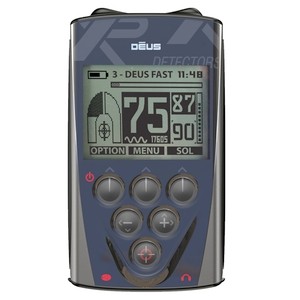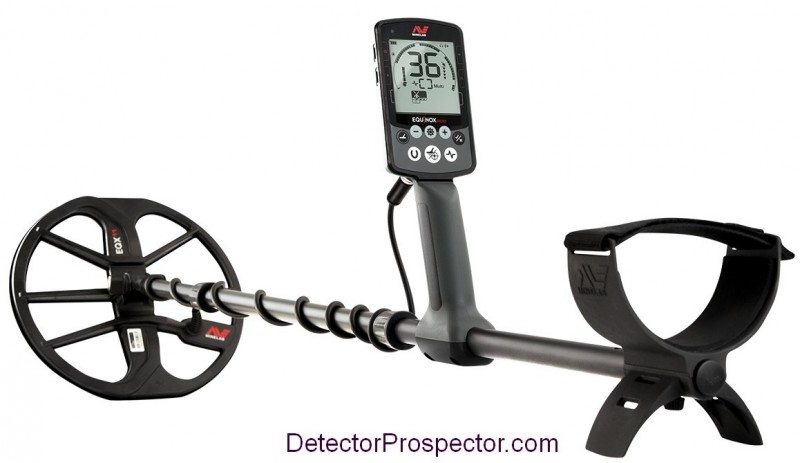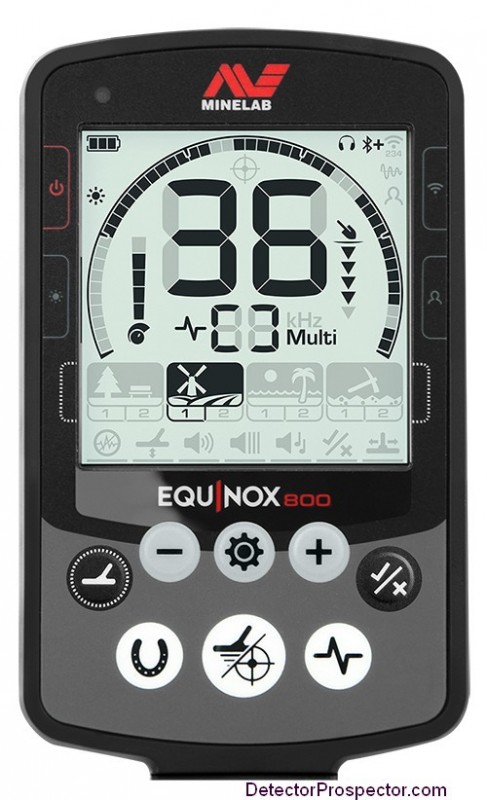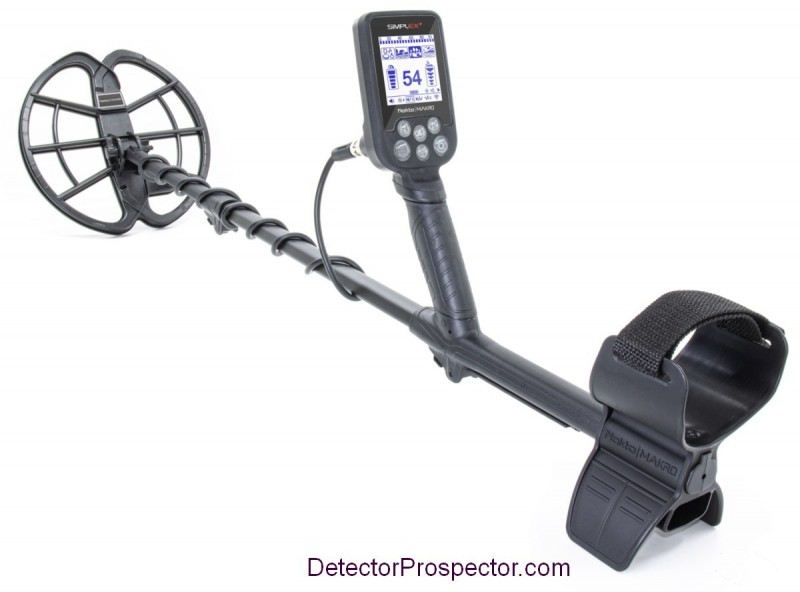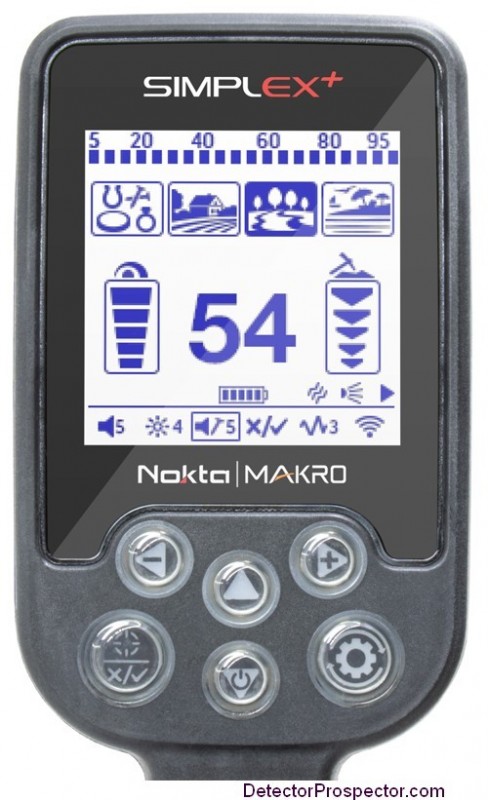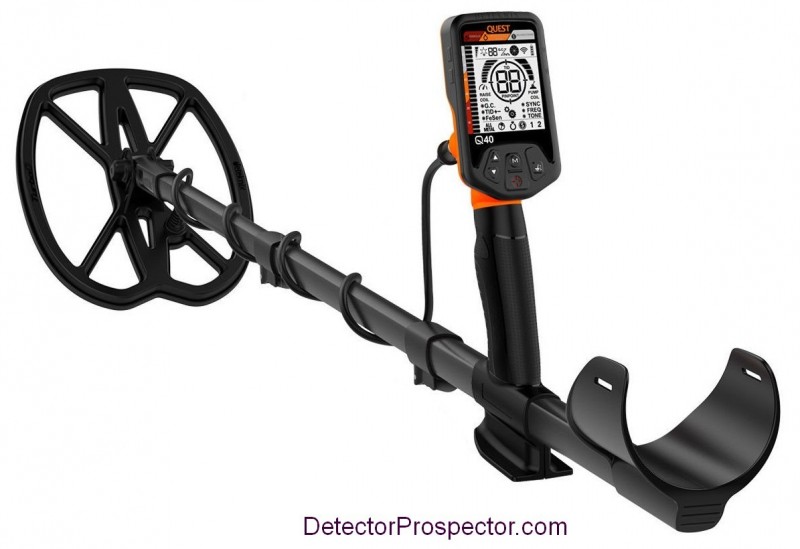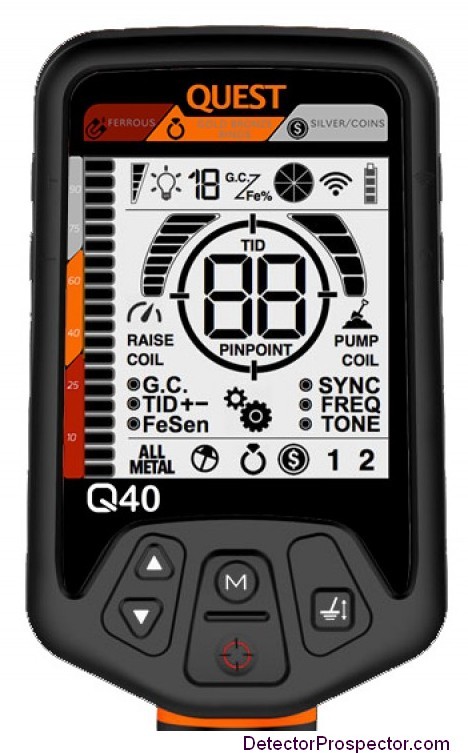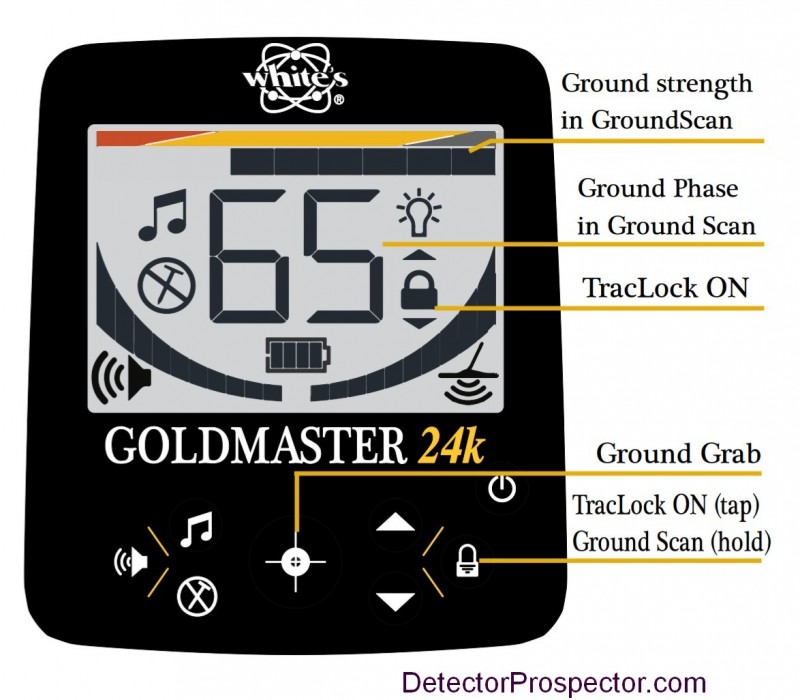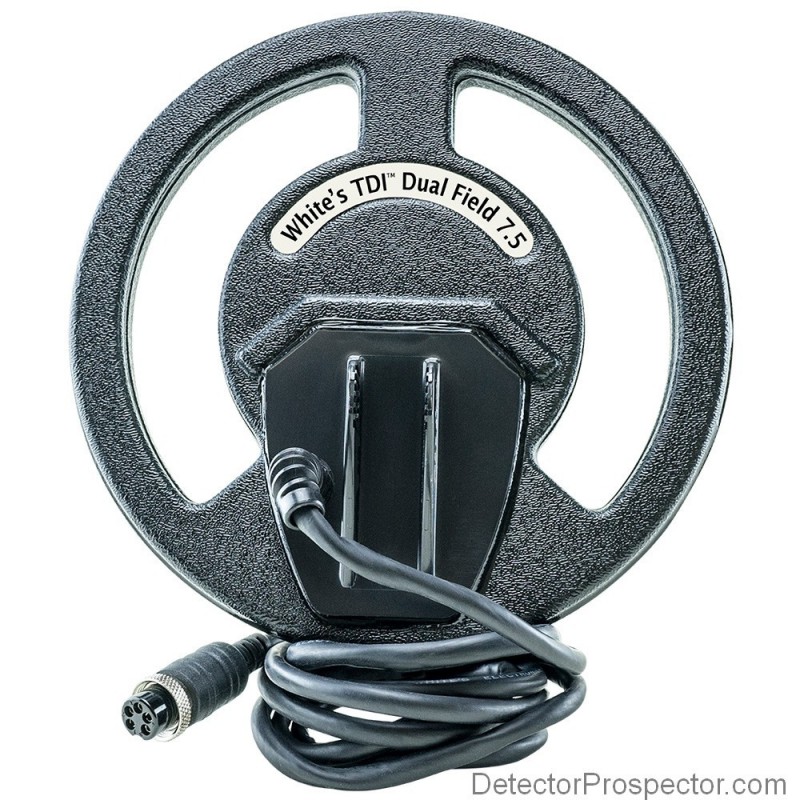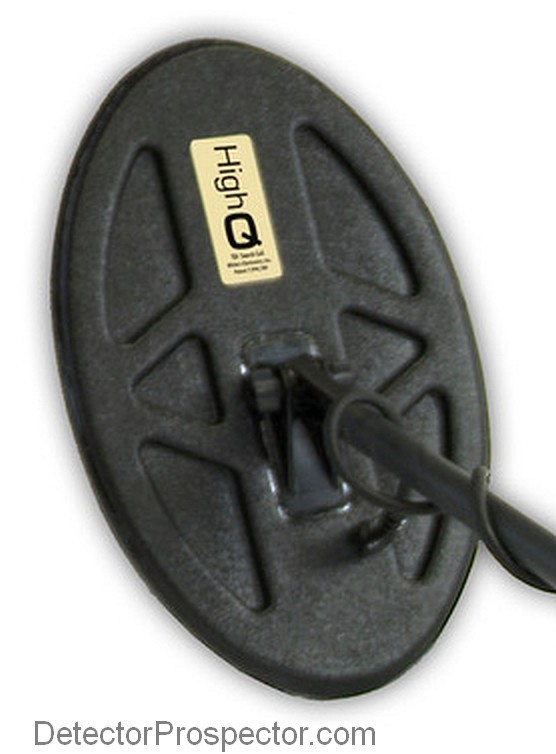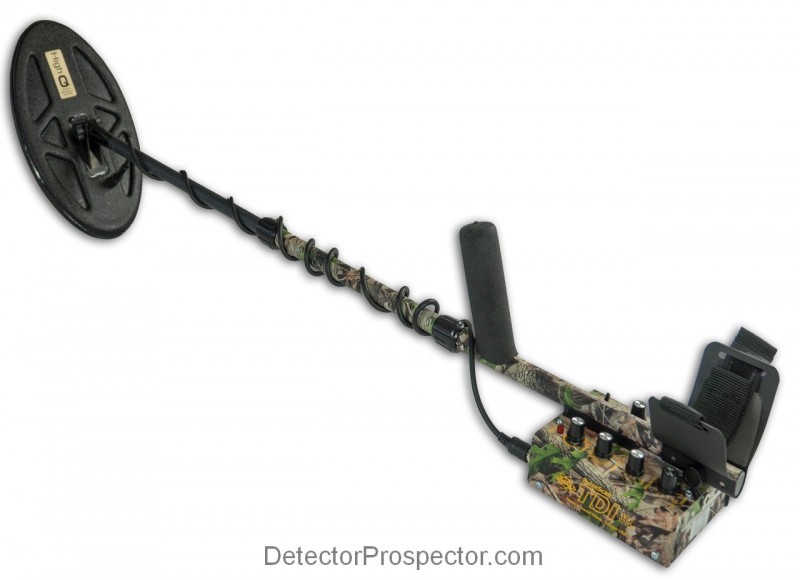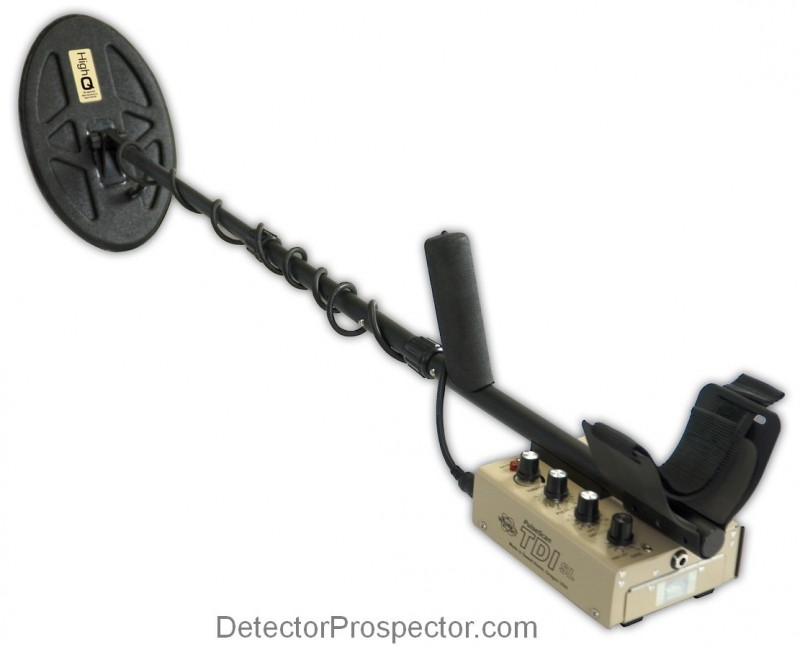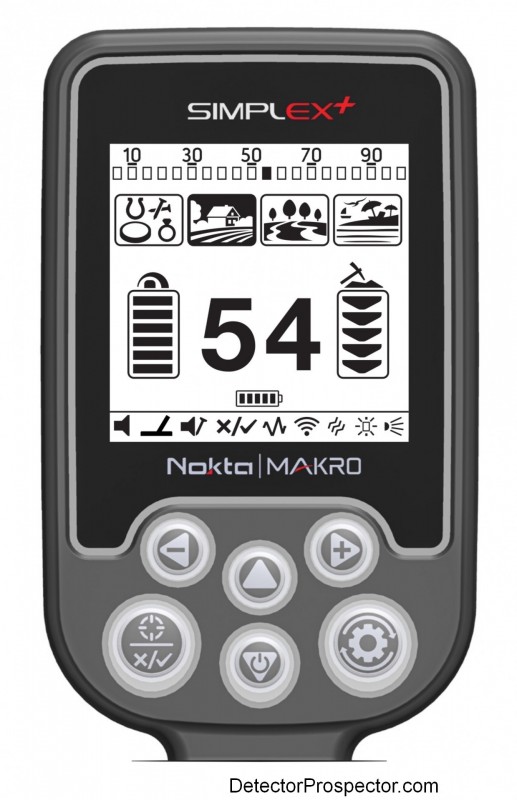-
Posts
19,761 -
Joined
Content Type
Forums
Detector Prospector Home
Detector Database
Downloads
Everything posted by Steve Herschbach
-
There is one pictured in the original post. It’s white.
-
Good man Rob, I have to say I agree. 👍
-

Steve's 2019 UK Adventure
Steve Herschbach replied to Steve Herschbach's topic in Metal Detecting For Coins & Relics
Hello Trevor, been awhile. If you like I can merge your new account with your older one. Or are there two Trevors in New Zealand both in this prospecting and detecting game? Thank you for the kind words. All my stories past and present are collected and updated at Steve’s Mining Journal. My life has been a grand adventure in many ways - I have truly been blessed in that regard. -
I agree about the Deus. I also agree about the theory of what you are saying. And I still think it’s a relative non-issue from a practical standpoint for machines this light. The Deus is an imbalanced nose heavy detector, but at the weight level it is at it simply is not a big deal. Since you edited your post to comment on “a lot” I will do the same. I read ALL the forums Rick.
-

White's Electronics TDI High Q
Steve Herschbach replied to Steve Herschbach's topic in White's Metal Detectors
Better for what? Finding small gold? No way. Handling difficult ground and hot rocks? That is what a PI is for more than anything else. In moderate to low mineral conditions with few or no hot rocks you are better off with a VLF and since this is the White’s forum 24K or GMT. If those machines are having fits due to the ground or the hot rocks, then you switch to a PI like the TDI. My little saying is “use a VLF when you can and a PI when you have to”. People talk about finding small gold with a PI like the TDI but it’s all relative. Compared to the 24K the TDI is relatively blind to tiny gold and wiry, spongy gold. For my northern Nevada low mineral, small gold locations I prefer the 24K to the TDI. PI detectors, since they ignore the ground far better than a VLF, have an inherent ability to run much larger coils than a VLF. In bad ground a large coil on a VLF is actually counterproductive, since ground feedback overwhelms and negates any hoped for depth advantage. That’s why you rarely see coils larger than about 14” employed on VLF detectors. Since PI detectors are far less subject to ground issues they can run much larger coils effectively, making them superior at finding larger items at greater depths. It is not unusual to see 18” coils on PI detectors and coils up to 36” are employed regularly by some users. -

Talked Myself Into a 25" Nugget Finder Coil
Steve Herschbach replied to Steve Herschbach's topic in Minelab Metal Detectors
Just a warning... it will find deep trash even deeper than the good stuff, and pinpointing can be a real challenge! -

Latest Thoughts On SDC Aftermarket Coils?
Steve Herschbach replied to Sourdough Scott's topic in Minelab Metal Detectors
Great report BMesenko, that's the kind of stuff people can use. It should not surprise as the trade between coil size, target size, coverage, and depth is generally known. No free lunches unfortunately. Thanks! 👍 -
The cell phone is now a common day device owned by most people. It was inevitable that a metal detector designer would mimic the look and feel of a cell phone in an attempt to modernize how metal detectors are perceived. As far as I know it was Quest (back when they were named Deteknix) that first came up with this design. Or at lest they were the first to really market something like this in 2015. Then we next got the Minelab Equinox in 2018. And now the Nokta/Makro Simplex+ in 2019. Some might call this copycat designing but form follows function to a certain degree and all items copy others in some ways. All T-shirts have a head hole and two arm holes. Still, I think Deteknix/Quest gets the credit here for first popularizing this design. I'll be surprised if more are not to follow. Quest metal detector Minelab Equinox metal detector Nokta/Makro Simplex+ metal detector Quest metal detector controls & display Minelab Equinox metal detector controls & display Nokta/Makro Simplex+ metal detector controls & display
-

Steve's 2019 UK Adventure
Steve Herschbach replied to Steve Herschbach's topic in Metal Detecting For Coins & Relics
Mug courtesy of Tim Blank... thanks Tim for recording the memory for me! -

White's Electronics TDI High Q
Steve Herschbach replied to Steve Herschbach's topic in White's Metal Detectors
Great idea! 👍 -

White's Electronics TDI High Q
Steve Herschbach replied to Steve Herschbach's topic in White's Metal Detectors
“They” is me... I wrote up that spec sheet based on my involvement in the orIginal TDI project from day one. Before day one actually. Anyway, all motion detectors have an optimum sweep speed unless it’s adjustable, as in the White’s V/SAT control. Simply bury a target and sweep over it to find the best sweep speed. There is too fast and too slow and “just right”. A lot of modern VLF detectors do best at a pretty fast clip and people actually hurt themselves slowing down too much. But again, specs are just an indicator, only actually testing your machine will give you a feel for the proper sweep speed. Some machines are forgiving in this regard and some very picky. Knowing this is another thing that gives an operator that magic edge. The TDI in general benefits from “low and slow”. -

White's Electronics TDI High Q
Steve Herschbach replied to Steve Herschbach's topic in White's Metal Detectors
If the voltage did not drop almost instantly to 1.5 volts that might work. Reality is probably “no”. From https://data.energizer.com/pdfs/lithiuml91l92_appman.pdf: From ”Although the higher OCV of the LiFeS2 system is 1.8 volts, the nominal or rated voltage is 1.5 volts which makes it a suitable replacement for alkaline and nickel systems. The battery voltage will drop when it is placed under load. For this reason, the higher OCV will typically not damage electronic components, but device designers should take into consideration that the OCV of fresh batteries can range from 1.79 to 1.83V. LiFeS2 batteries fully meet the ANSI specification for a 1.5V battery. When a drain has been applied to the battery, the OCV drops dramatically and then slowly recovers with time.” -
Subject pretty much burned itself out but here you go.... https://www.detectorprospector.com/forums/topic/10450-my-nox-is-toast/ https://www.detectorprospector.com/forums/topic/6908-my-equinox-has-drowned-and-waterproof-headphones/ https://www.detectorprospector.com/forums/topic/10640-another-flooded-nox/ https://www.detectorprospector.com/forums/topic/10644-with-the-reports-of-drownings/
-

White's Electronics TDI High Q
Steve Herschbach replied to Steve Herschbach's topic in White's Metal Detectors
The tan page on whites website says 12” and the camo page says 14” and all the dealer ads out say 12”. The Miner John was 12” so I am going with that until proven otherwise. -

Detailed Review Of White's Goldmaster 24K
Steve Herschbach replied to Steve Herschbach's topic in White's Metal Detectors
Something I will have to play with I guess. I have never found an actual practical use for the Ground Scan Mode or the "Trace the Black Sands" mode on the GMT so off the top of my head I don't have any idea for what the audio does when using this mode. My gut tells me you have to eyeball the screen. From the User Guide: "Ground Scan is enabled by holding the LOCK button. The display will change to display the ground strength on the top bar, increasing from right to left. Full bars equates to very strong mineralization, and one flashing bar alerts you that no ground information is present. The two-digit numbers displayed are the ground phase. Solid ferrite will read around 81, alkali will read between 50 and 30, but you may encounter any range of phase numbers depending on the area you are in. In Ground Scan you can also set a ground offset by using the UP and DOWN arrows. This selection will affect the ground offset in normal search mode whether using XGB or locked settings. Ground Scan is very useful in prospecting dry washes or creek beds for black sand deposits. One trick you can use is to carry some landscaping flags with you, placing one down where the mineralization is the strongest about every 10 ft. That is where you would want to process material through a sluice or dry washer. To return back to the regular search mode, tap the LOCK or CROSS HAIRS." White's Goldmaster 24K XGB Ground Tracking Explained -

First Accessory Coil For The Simplex
Steve Herschbach replied to Jackpine's topic in Nokta / Makro Metal Detectors
Not being the shy type I will bet there are more coils for the Simplex by year end then there are for the Equinox after two years. -

White's Electronics TDI High Q
Steve Herschbach replied to Steve Herschbach's topic in White's Metal Detectors
All threshold based motion type detectors have a threshold autotune or reset rate, either preset or adjustable. I added a link to the tech notes. Plus here is a detailed article... https://www.detectorprospector.com/magazine/steves-guides/steves-guide-metal-detector-autotune-threshold-sat-vsat/ -
No, the pinpoint low volume bug is a fault. It should not matter what the coil is over; when you engage pinpoint it should come on at the same volume level every time. The whole time I was in the UK it happened randomly, and I just hit the pinpoint button a second time and the it would work. Or I would just ignore it since I could hear it, just at a very low volume. Other detectors do not do it and neither should the Equinox. I'm surprised it did not get addressed in the latest update. Half the time I don't use pinpoint at all, just eyeball the beeps. In any case for me it is such a low level annoyance I really don't pay any attention to it. But this thread was about a separate issue, which is why I asked the question.
-
Had which happen?
-

Steve's 2019 UK Adventure
Steve Herschbach replied to Steve Herschbach's topic in Metal Detecting For Coins & Relics
Just got this cool note: "This email is to let you know that you are the winner of the Minelab’s Find of The Month competition for September 2019. Congratulations! We thought your story and finds were great!" Funny thing is they run this competition but I can find no place anywhere that they actually announce the winners anymore. The last announcement seems to be from November 2018. You would think they would want to promote it on their Facebook page at least. I guess just getting people to submit stories is the main goal but they would benefit from letting people know they actually do award the prizes also. Whatever - thanks Minelab!! -
All-new patented 8"×12″ Dual Field coil for improved depth and sensitivity. Bonus 7.5″ Dual Field concentric coil for a limited time! To hunt all day, you need a lightweight detector that still provides high performance. The TDI SL Metal Detector has pulse induction power that provides unbeatable depth and sensitivity and is designed specifically for prospecting and identifying relics. Special prospecting features make life easier, such full-control ground balance that filters out the iron mineralization of hot rocks, black sand, and other tough grounds. This compact detector weighs only 3.5 pounds with its waterproof 7.5" x 12” High-Q Search Coil, which offers deep detection depth. Other accessory coils are also available. The rechargeable NIMH battery lasts up to 6 hours, and a backup AA battery back will power all-day exploration. Owner's Manual (for TDI SL series, none specific to High-Q) White's TDI SL High-Q Camo metal detector White's TDI SL High Q Technical Specifications* Internet Price TDI SL High Q $1099 (available in both tan or camo colors) Technology Ground Balancing Pulse Induction (GBPI) Frequency 3250 - 3370 Pulses Per Second Autotune Mode(s) Slow Motion Ground Rejection Manual, one turn control Soil Adjust Ground Balance On or Off (two position switch) Discrimination Conductivity switch*, 10 - 25 Pulse Delay Volume Control No Threshold Control One turn control Tone Adjust No Audio Boost No Frequency Offset One turn control Pinpoint Mode No Audio Output Speaker, 1/4" headphone socket Hip Mount No Standard Coil(s) 7.5" x 12" High Q plus bonus 7.5" round Dual Field (Limited Time only) Optional Search Coils Over 100 accessory coils available by White's and others Battery Rechargeable NiMH & AA Operating Time Up to 6 hours Weight 3.5 pounds Additional Technology The TDI was designed specifically to be able to use Minelab SD/GP compatible coils. However, performance can vary and the pulse delay may have to be advanced to compensate for coil differences that result in overload readings. Notes *The TDI is unique in that it can suppress audio responses into two different classes. Targets have a high tone or low tone audio depending on how the target relates to the ground balance setting. In general high conductive targets give a low tone and low conductive targets a high tone. The TDI can be set to allow for one response or the other. See White's TDI Coin Settings for more details on this control. *Notes on Technical Specifications - Detailed notes about the specifications listed in this chart. White's TDI SL High-Q Tan metal detector White's 7.5" x 12" High-Q coil for TDI series White's 7.5" round Dual Field coil for TDI series
-
It seems like everyone has issues with the volume on underwater detector headphones. I am very much intrigued by the idea of using the Nokta/Makro vibration mode and no headphones at all for hunting in the water with a mask and snorkel. Not only a savings in money but a real potential boon for those who are hard of hearing anyway. This is a feature that deserves more investigation than it seems to have gotten so far. Vibration This feature provides feedback to the user by producing a vibration effect when a target is detected. It can be used independently or together with the audio response. When audio response is disabled, all responses during target detection are provided to the user as vibration only. When the vibration is turned on, the device provides short vibration signals upon target detection. The magnitude of the vibration effect can vary according to the depth of the target and the swinging speed. This setting is common in all search modes. To turn on or off the vibration, after selecting vibration in the settings menu, use the plus (+) and the minus (-) buttons. Vibration may not be felt in the All Metal mode with weak signals; it will be felt as the signal gets stronger. In other words, vibration does not start at the depth where the audio tones are heard but at a lesser depth. Therefore, if you are detecting with vibration only and audio tones are off, you can miss weaker and deeper signals. NOTE: The vibration setting always comes in off position when device is turned off and on again. Nokta/Makro Simplex+ display and controls

